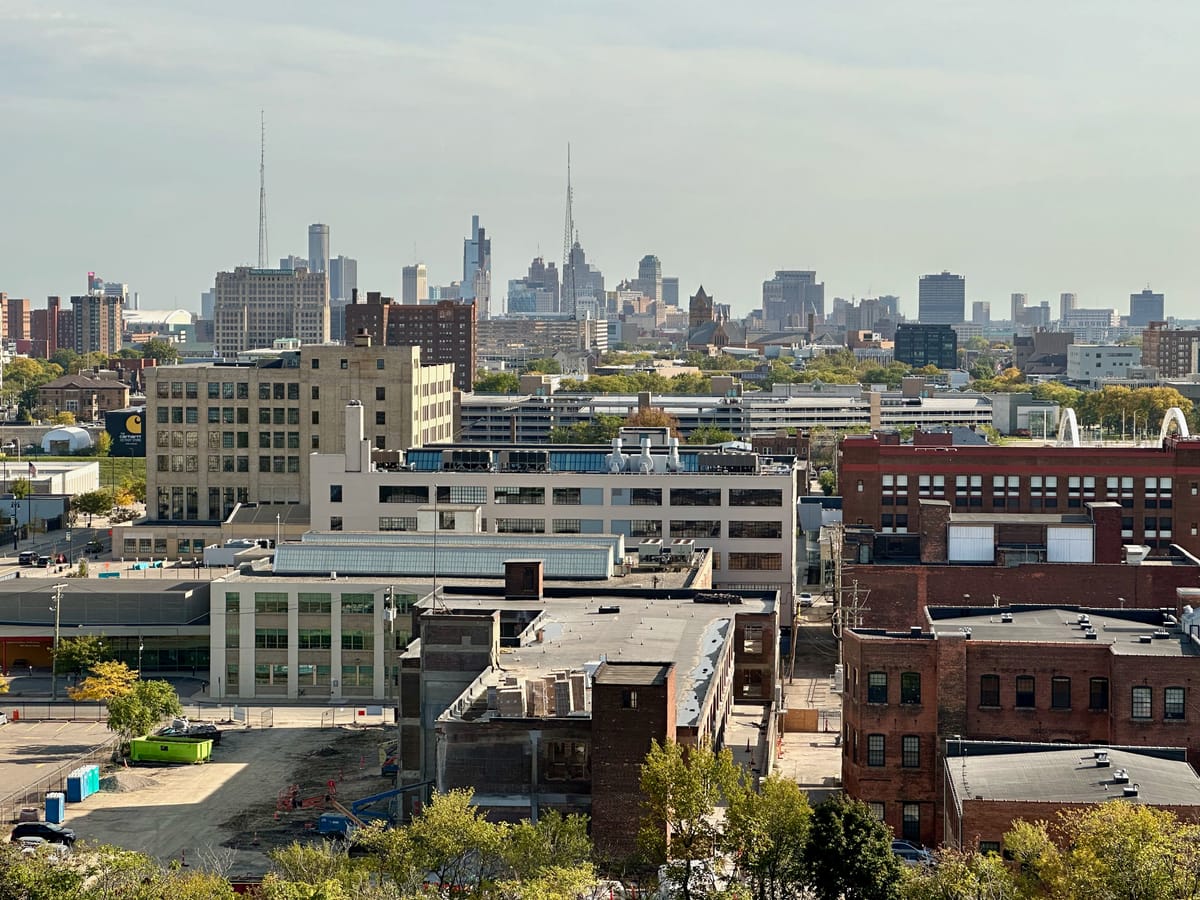The impact of the Coronavirus is going to go far beyond just those who get sick. State budgets across the country will be completely upended, and one of the many areas cuts will have to happen if there isn’t some sort of Federal program of support is the schools.
Below you’ll find our interview with Ron French of Bridge who had a great piece highlight what’s ahead. The audio is in the player at the bottom of your screen (the segment begins at about 14 minutes in), and a lightly edited transcript from our Daily Detroit podcast is below.
Jer Staes: Joining me on the line is Ron French from Bridge Magazine. Welcome back to Daily Detroit, sir.
Ron French: Oh, it’s good to be here. Thanks for the invitation. Absolutely.
JS: So some news caught my eye late yesterday that I thought it was important to talk about specifically around Michigan schools. Now, there are many impacts that the Coronavirus will have to budget and in daily life, but I wanted to focus here on the Michigan schools because it was kind of an eye popping number that was floated for a cut for next year.
RF: Obviously, there are impacts in every direction you can think of because of the pandemic and schools are certainly not immune from that.
Schools are obviously gonna have to figure out what they’re doing in the fall to keep kids safe, which is probably going to increase their costs. But at the same time, you know, obviously the public schools are funded by the state. And the revenue that the state is bringing has just fallen through the floor. We’ll find out more later this week.
But the anticipation is that in the next 18 months, the state is going to be short of anticipated revenue by between $2 billion and $7 billion.
I was talking to Wayne Schmidt, who is a chair of the Appropriations Committee in the Senate that puts together that budget for Michigan’s public schools —K 12 schools. And he sort of floored me when he said that school should really anticipate the most likely scenario is a 20 to 25% cut in per-pupil funding.
And for your listeners, the majority of funds that schools get are based on the number of kids that are in seats. And so for every kid that attends your school, you get about $8,000. And he’s talking about a cut that could amount to $2,000 in one school year.
JS: That seems like that would just blow a giant hole and local school district budgets because in Michigan funding is centralized from the state down and then the school districts make individual decisions on what to do with it.
RF: Exactly. After 1994, there was what was called Prop A that changed the way schools are funded. Schools don’t have much ability to raise local money for their schools. They can put bond issues to build a new school or to buy some computer equipment, but they can’t pay teachers salaries, and it’s salaries that is the majority of the school district’s budget.
So when you’re talking about cutting, it amounts to about 20% of the school districts budget that they’re talking about eliminating in one year, in one fell swoop. I talked to a lot of school leaders and they say, well, obviously they believe it’s devastating. But how that would play out? Is you’re talking about massive layoffs of teachers. And so at the one time, here’s the amazing thing, the one school year where you want your classes to be as small as possible, because you want kids to social distance might be the year when you have the largest number of students in the classroom.
JS: It also strikes me that there is a knock-on effect to the economy too, laying off that many — those teaching jobs are generally middle class, generally jobs that, you know, you can take care of your house and do things with. They’re careers and laying off that many people is going to hurt the economy.
RF: Well, there’s an even bigger economic impact that the schools are worrying about now, if there’s really this sizable cut that is made in one year and you have to implement it in September plus the idea that it’s quite possible that Governor Whitmer may say, schools gonna reopen, but you have to have the guidelines where kids have to be six feet apart or something.
It’s quite possible that schools may decide that they have to have sort of an A/B schedule where Johnny may be in school Monday, Wednesday, Friday and Susie may be in school Tuesday, Thursday and Saturday to cut the number of kids in half who are in a school building in any one time. How does that play out in a family? For a lot of families, that means a parent has to stay at home, because their second or third grader is home two or three days a week. So think about the economic impact of all these families, these two income families, where suddenly one person can only at most have a part time job.
JS: Wow. And I know personally of folks who work at districts who are already starting to be laid off in response to the the fear that cuts are coming and yet people don’t really know how much. Are there any things that could help blunt the impact of this? Since we can’t raise local taxes to fund our own teachers at this point, that’s not you know, within the state guidelines, what could happen in a greater scale? What are things that could be done to to help head this off at the pass because this sounds like with the amount of cuts of the budget has to be made — cuts are gonna have to come somewhere and they’re going to be pretty strong unless there’s some outside force.
RF: Yeah. Schools are sort of praying for that outside force you mentioned, what they’re hoping is that there’s a fourth round of stimulus money from the federal government that is specifically targeted for states to use as they want, for local municipalities use as they want, and also specific money for K 12 schools.
Right now, the schools are getting some money from earlier stimulus packages because of the pandemic. But that money cannot be spent in basically a general fund way. In other words, not just going to your or my bank account that we can use to pay our mortgage. It has to be used in a way that compensates for the extra cost from the pandemic.
What the schools are hoping for because they’re seeing the state and saying there’s no way the tax revenue and sales and gas tax revenue is going to go back up in the next month and change things.
The only thing that’s going to save these schools is a huge influx of money from the federal government.
JS: And how are people feeling about the chances of that when you’re talking to leaders?
RF: Well, they point to some bailout that the states and schools received during the stock market meltdown in 2008, 2009, 2010. The federal government stepped in and just shoveled money at states to help them survive. And in Michigan, schools received a fairly sizable chunk of money for three or four years. That helped them get through this very tough period. When that money ran out, that’s the problem. When the money ran out the following year, the schools took a I want to say $470 per student cut, which at that time was the largest cut that schools have ever received in per-pupil foundation allowance, and but of course, that just looks tiny compared to the $2,000 cut that they’re talking about now.
JS: Before I let you go, I mean, I just the level of these cuts just seems so weighty and so stunning about the changes that would have to be made to cut that much of the budget. I mean, you’ve got to be looking at larger class sizes, building closures, all kinds of knock-on effects that we can’t even really predict yet. Could we?
RF: Right. I’ve been talking to some school superintendents trying to get them to speculate what would a $2,000 per student cut look like? If it were implemented in your school district?
All of them say there would be layoffs.
All of them say they would have to renegotiate contracts with all their unions.
They also brought up maybe we would just say we can no longer provide transportation, all school buses, they’re sitting in a parking lot right now. You got to think you got to find your own way to school.
And frankly, everyone I bring this up to say if you have that level of cut, there will be numerous school districts that close. That they just will not be able to survive.
JS: Wow. I don’t I don’t have another word, Ron.
RF: Yeah, I know. It’s very scary and I think that figure, to be honest, is something that that’s the worst-case scenario, there are going to be huge cuts in every department and certainly, with K 12 and higher ed, they’re all going to be cut badly. Will it actually be a 25% cut? Maybe not, but it’s going to be probably a bigger cut than the schools have ever received. And so it’s probably good for the schools as they are to start planning for schools to look a lot different in the fall than they have in the past.
JS: Well, Ron French from Bridge, thank you for your time and this is a heavy one.
RF: (In jest) Just wanted to cheer up your listeners.
JS: Right. But you know, I really appreciate your time because it’s important we have these discussions. With everything that’s going on out there. There are so many impacts of Coronavirus, the pandemic and everything else that we don’t start paying attention to them now, they’re going to catch us blindsided later on.
RF: Oh yeah. It doesn’t matter if you know someone who became ill or God forbid passed away from this. Everyone’s going to be affected by Coronavirus.
You can read Ron French’s full piece in Bridge Magazine here: https://www.bridgemi.com/talent-education/gop-leader-25-percent-cuts-michigan-schools-coronavirus












